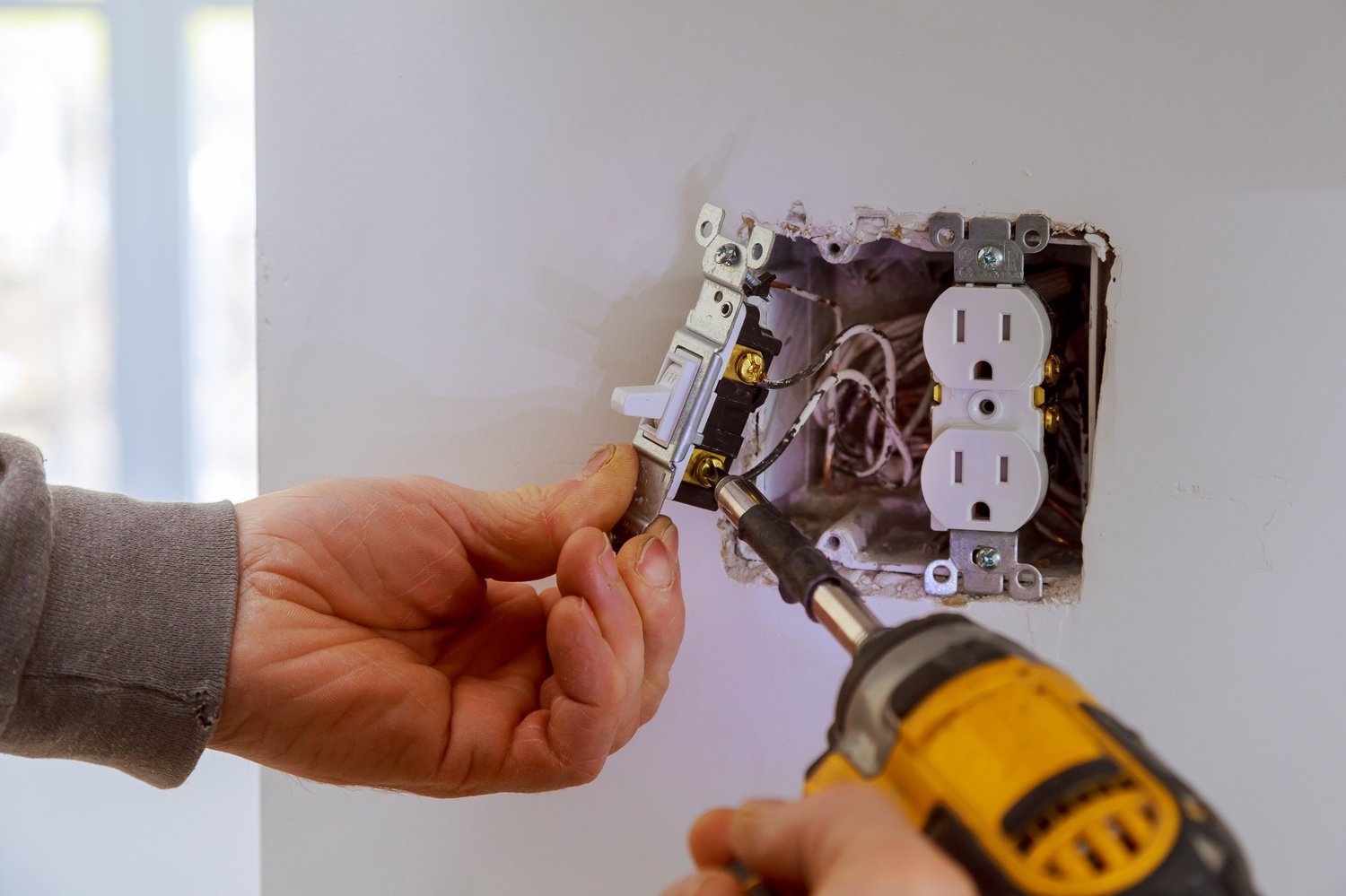Electricity runs through the heart of every home, yet a loose electrical outlet can turn this reliable energy source into a silent hazard. Understanding how to safely address this common issue is key to maintaining a secure and efficient household. Let’s explore why a small wobble behind your plug could demand your immediate attention.
- Loose electrical outlets can pose risks of fires and damage to appliances, making it essential to address the issue promptly.
- Identifying an outlet’s looseness involves specific inspection techniques that ensure your safety and accuracy.
- Having the right tools, like screwdrivers and voltage testers, saves time and increases the effectiveness of your repair efforts.
- Step-by-step guidance simplifies the process of securing outlets, helping prevent future electrical issues.
By investing a little time in understanding and securing loose outlets, you not only enhance the safety of your home but also extend the lifespan of your appliances. Read on to arm yourself with the knowledge and confidence to tackle this task effectively.
Understanding the Risks of Loose Electrical Outlets
Loose electrical outlets in your home can lead to a variety of potentially dangerous issues. One major concern is unstable electrical connections. When an outlet becomes loose, the wiring may shift or disconnect, leading to inconsistent power flow. This can result in electricity arcing, which poses a significant fire hazard.
Moreover, loose outlets can cause damage to the appliances connected to them. Electrical devices require steady voltage to operate efficiently, and irregular power flow can result in fluctuating electrical currents, which might harm sensitive electronics or decrease their lifespan. Additionally, a loose outlet can increase the risk of electric shocks, especially if the wiring becomes exposed.
By understanding these risks, you emphasize the importance of addressing loose electrical outlets promptly. Prioritizing the stability and safety of your household electrical systems is crucial in maintaining a safe living environment.
Identifying a Loose Electrical Outlet
Before you can take corrective action, it’s essential to identify if an outlet in your home is loose. Begin by performing a safe and thorough inspection. To do this, ensure the power is turned off at the circuit breaker to prevent any accidental shocks.
Next, examine the visual signs of looseness. Look for crooked or misaligned outlets, gaps between the outlet plate and the wall, or outlets that shift when you plug in a device. Another sign to check for is any damaged or worn outlet covers, which can indicate past movement or looseness.
Beyond visual cues, assessing the feel of the outlet can provide insight into its condition. Gently push or wiggle the outlet; if it moves, even slightly, it’s a clear indication that the outlet is not securely fastened. This manual check helps determine the severity of the issue and whether immediate intervention is required.
Properly identifying a loose electrical outlet ensures that you can take the necessary steps to fix it, safeguarding your home from potential electrical dangers.
Tools and Materials for Fixing Loose Electrical Outlets
When tackling the task of securing loose electrical outlets, having the right tools and materials is crucial for safety and effectiveness. Equipping yourself properly minimizes risks and streamlines the repair process.
You’ll need a screwdriver, which is indispensable for removing and tightening screws that hold the outlet in place. A voltage tester is essential for safety, allowing you to check that the power is off before starting any work on electrical outlets.
Another critical tool is outlet spacers. These spacers help fill gaps between the outlet and the wall, ensuring a snug fit and preventing further loosening over time. Other useful materials might include wire strippers if you encounter damaged wiring during your fix.
By assembling these essential tools and materials ahead of time, you’ll be ready to tackle the repair process efficiently while adhering to electrical safety standards and best practices.
Step-by-Step Guide to Fixing Loose Electrical Outlets
Addressing loose electrical outlets involves following a precise series of steps. This guided approach ensures that you can perform the task safely and successfully.
Step 1: Turn Off Power
Begin by switching off the power supply to the outlet you’re fixing. Use a voltage tester to confirm that the outlet is not live before proceeding.
Step 2: Remove the Outlet Cover
Carefully unscrew the outlet cover plate using a screwdriver. Set aside the screws and cover plate for reinstallation later.
Step 3: Secure the Outlet
Check the screws that hold the outlet in place. If they are loose, tighten them securely. If gaps are present, add outlet spacers to fill the space between the outlet and the wall, ensuring a stable fit.
Step 4: Reinstall the Outlet Cover
Once the outlet is firmly secured, reattach the cover plate. Align it properly and screw it back into place for a neat finish.
Step 5: Test for Stability
After reassembly, test the outlet for stability and proper functioning. Ensure the outlet does not wiggle and that all electrical connections are secure. Turn the power back on and verify usability with a voltage tester.
Tackling each step methodically not only resolves the issue of a loose outlet but also reinforces safety measures within your household electrical systems. If at any point you feel uncertain, consulting a professional is advisable for peace of mind and optimal results.
Final Checks and Ensuring Safety Post-Fix
After securing a loose electrical outlet, conducting comprehensive final checks is imperative to ensure your home’s electrical safety. A stabilized outlet not only enhances your household’s electrical stability but also diminishes the likelihood of future electrical issues.
Begin by turning the power back on at the breaker and gently testing the outlet with a voltage tester to confirm it is functioning correctly. The voltage tester will indicate whether or not the outlet is receiving power, serving as a vital step to verify the success of your fix.
Next, plug a small appliance or device into the outlet to check its operational capacity. The appliance should function without interruption, indicating a secure electrical connection. If you notice any flickering or humming noises, it may suggest underlying problems that might need professional intervention.
Make sure to inspect the outlet for any visible gaps or signs of instability. The outlet should sit flush against the wall, and there should be no movement when a device is plugged in or unplugged. A stable fit will prevent loosening over time and safeguard against potential hazards like electrical arcs.
Consider wrapping up with an overall inspection of your home’s electrical system. Ensure all outlets and switches are tightly secured and functioning appropriately, thereby maintaining a safe environment. If any outlets remain problematic, it may be wise to consult with a professional electrician.
By executing these safety checks and ensuring your outlets are properly affixed, you not only secure your household’s electrical stability but also foster a safer environment. Always prioritize electrical safety, and don’t hesitate to seek expert help when necessary.
Common Questions About Fixing Loose Electrical Outlets
What are the signs of a loose electrical outlet?
Look for outlets that move or shift when you plug or unplug devices, or those with visible gaps between the outlet and wall.
Is it dangerous to leave a loose outlet unrepaired?
Yes, loose outlets can create unstable electrical connections, posing fire risks and potential appliance damage.
What tools do I need to fix a loose electrical outlet?
You’ll need screwdrivers, outlet spacers, and a voltage tester.
How can I ensure my safety while fixing an outlet?
Always turn off the power at the breaker box before beginning repairs, and use a voltage tester to confirm no electricity flows to the outlet.
When should I call a professional?
If you notice scorch marks or burning smells near the outlet, or if you’re uncomfortable performing electrical work, contact a licensed electrician.





